1960s
Currier and Ives Toiletries
Many cultural touchstones of my youth have vanished, and mean nothing now to new generations."Currier and Ives" is one such.
At one time this name meant "nostalgic popular culture invocations of the nineteenth century." But given that meaning, what kind of smells would you necessarily associate with it? Horse manure? Coal fires? Unwashed longjohns? Was that what was meant by "manly elegance?
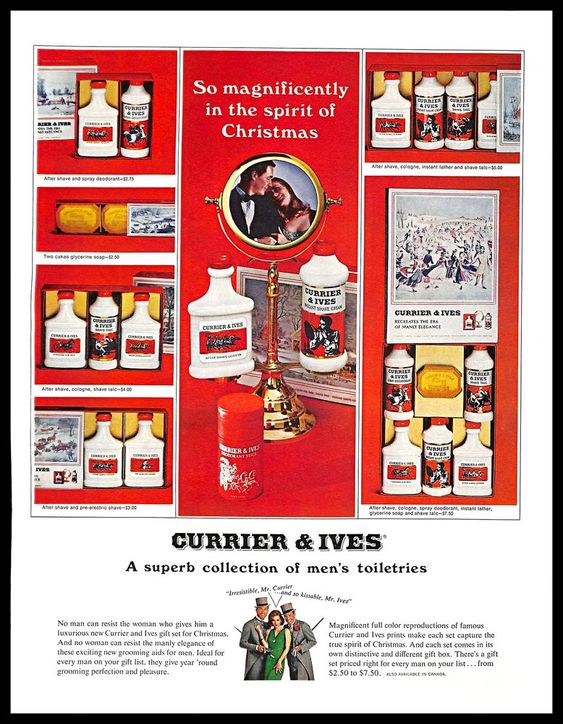
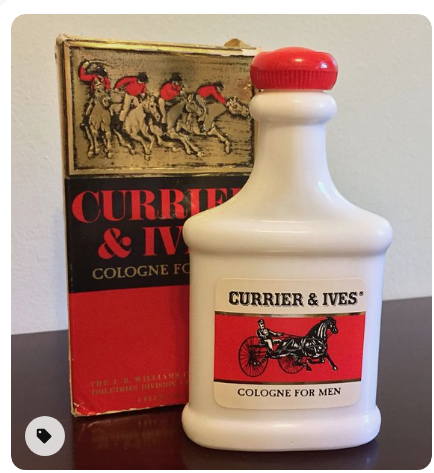
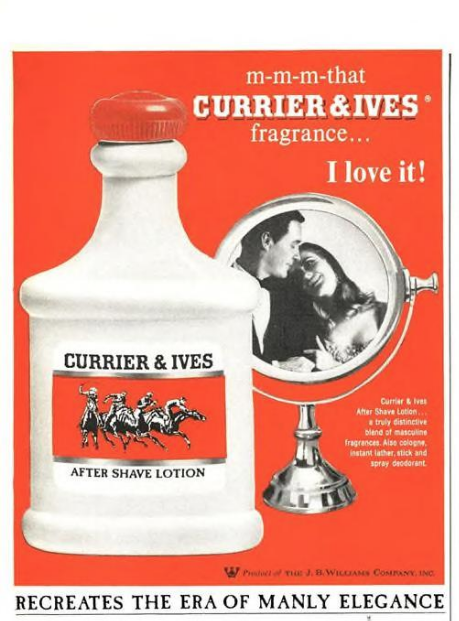
Posted By: Paul - Thu Jul 29, 2021 -
Comments (1)
Category: Advertising, 1960s, Perfume and Cologne and Other Scents, Nostalgia
Presenting the Losers
A 1967 ad campaign for Eastern Airlines.Of course, I'm pretty sure all the women in the ad were actually models/actresses. So in their true profession they were winners of a spot in the campaign. Most notably, that's Ali MacGraw sitting in the front row.

Time - Sep 29, 1967
Some analysis by Kathleen Barry in Femininity in Flight: A History of Flight Attendants —
Posted By: Alex - Mon Jul 26, 2021 -
Comments (5)
Category: Advertising, Air Travel and Airlines, 1960s
Wife Swapping By Mail
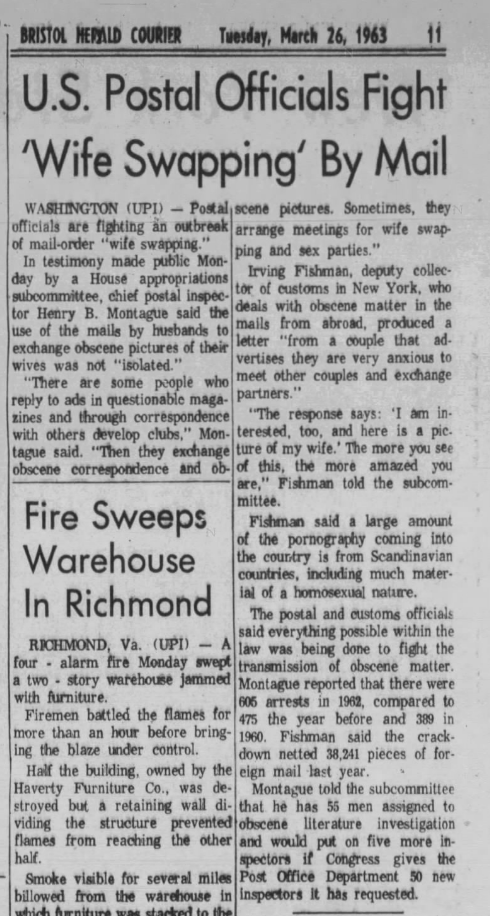
Posted By: Paul - Thu Jul 22, 2021 -
Comments (1)
Category: Husbands, Wives, 1960s, Sex, Postal Services
A Dummy Goes to Africa
Unfortunately, the book is not digitized, and original copies go for big bucks. But you can see more pics and read an account of the tale at the link.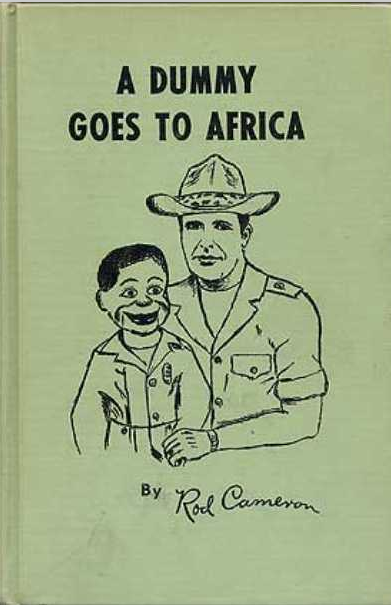
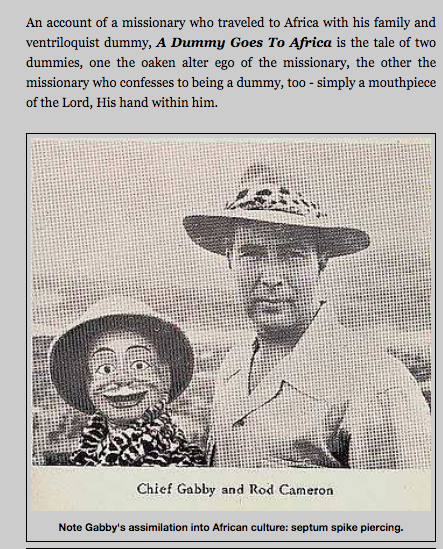
Posted By: Paul - Wed Jul 21, 2021 -
Comments (0)
Category: Puppets and Automatons, Religion, Books, 1960s, Africa
Ferdi Jansen
The artist's homepage. Sadly, she died very young in 1969.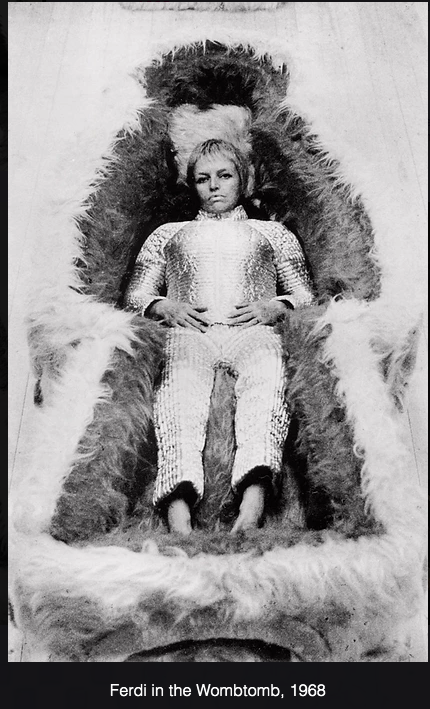
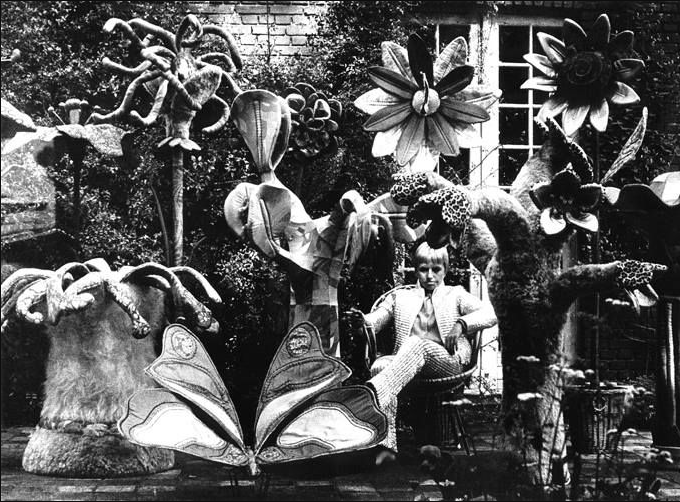
Posted By: Paul - Fri Jul 16, 2021 -
Comments (1)
Category: Art, 1960s, Genitals
Queen Mermaids of the Flin Flon Trout Festival
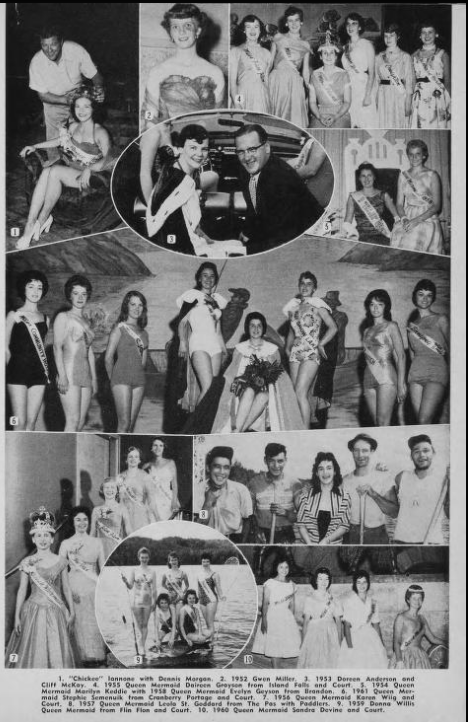
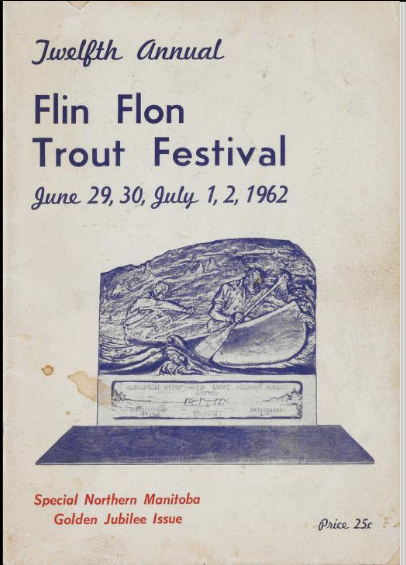
Source
Posted By: Paul - Thu Jul 15, 2021 -
Comments (8)
Category: Awards, Prizes, Competitions and Contests, Beauty, Ugliness and Other Aesthetic Issues, Regionalism, Fish, 1960s
Weird alien sounds designed to terrify and panic
In 1969, Alfred Mardarello et al. were granted a patent for a "noisemaking device" which could be attached to a missile. When the missile was fired and flying through the air, their gadget would create "weird, alien sounds" intended to terrify the enemy. From their patent:The psychological effects of weird or unexpected noises, which accompany an artillery projectile or missile, have been explored in many ways, prior to this invention, with minimum results. The Germans, in World War II, attached a noise producing device to aerial bombs, somewhat similar in construction to the organ pipe. A high pitched noise was created. This could be used only on large bombs and was too massive for use on artillery projectiles...
The insufficiencies of the prior art are overcome by the noisemaking adapter of the instant invention. The adapter ring is so designed that they attach to an existant missile without requiring modification of said missile. Centrifugal force, as a result of the spinning motion of the missile after being fired, causes the noisemaking arms or fins to extend and to produce weird, alien sounds of such magnitude as to be heard over a substantial area. The psychological effect, to create panic to those in the vicinity, is thus effected.
I have no idea if this patent was ever used in combat. But I don't really understand the point of making something that's already terrifying (a missile) even more terrifying by having it produce weird, alien sounds. Isn't the terror of the missile itself enough?
I guess it was part of the psychological warfare effort during Vietnam. See also Ghost Tape Number Ten.
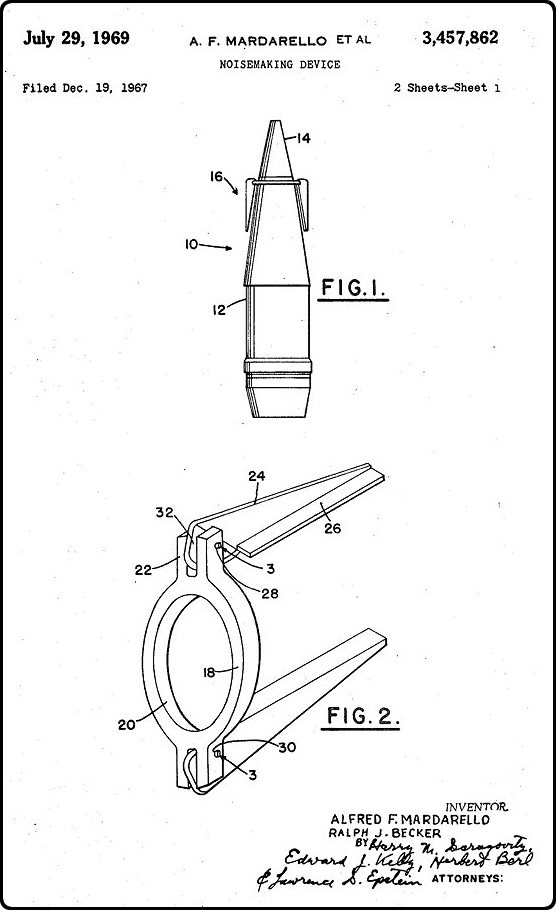
Posted By: Alex - Sun Jul 11, 2021 -
Comments (5)
Category: Patents, 1960s, Weapons, Cacophony, Dissonance, White Noise and Other Sonic Assaults
Doll-to-Doll Carpeting, and other Mr Leggs Ads
These Mr. Leggs ads offer a window onto the twisted male psyche of the 1960s. They ran in newspapers and magazines (Esquire) from 1963 to 1965.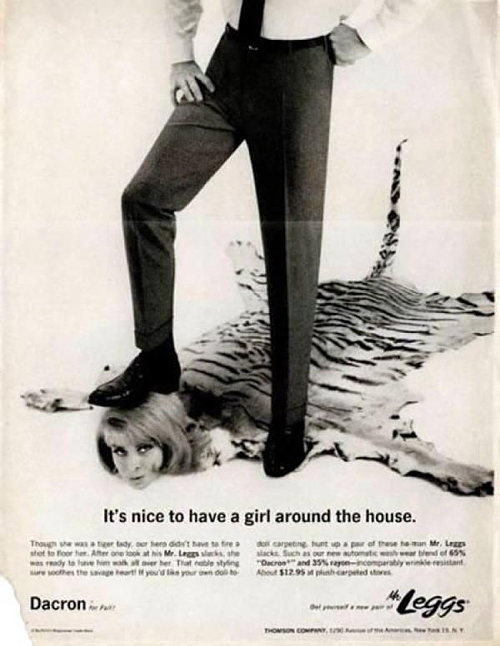
"Though she was a tiger lady, our hero didn’t have to fire a shot to floor her. After one look at his Mr. Leggs slacks, she was ready to have him walk all over her. That noble styling sure soothes the savage heart! If you’d like your own doll-to-doll carpeting, hunt up a pair of these he-man Mr. Leggs slacks."
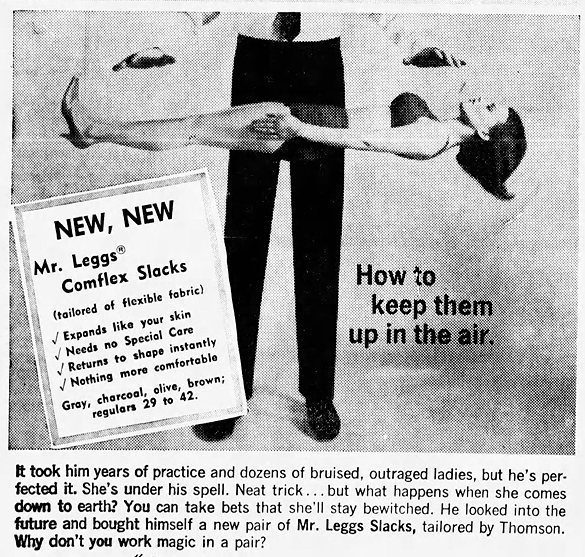
"It took him years of practice and dozens of bruised, outraged ladies, but he's perfected it. She's under his spell."
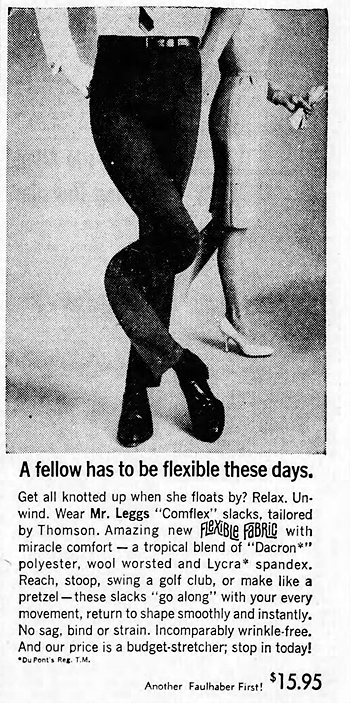
"Get all knotted up when she floats by? Relax."
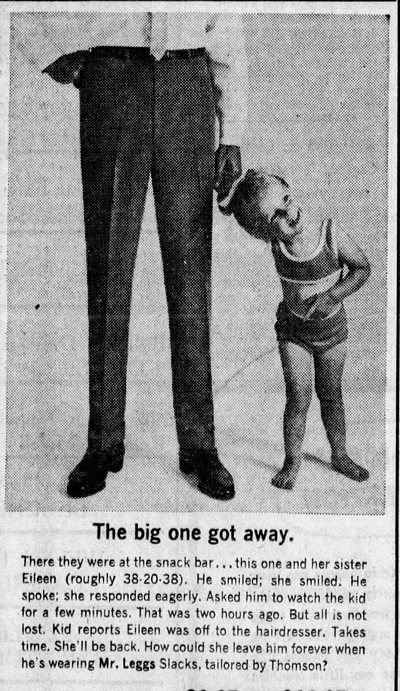
"There they were at the snack bar... this one and her sister Eileen (roughly 38-20-38). He smiles; she smiles. He spoke; she responded eagerly. Asked him to watch the kid for a few minutes. That was two hours ago."
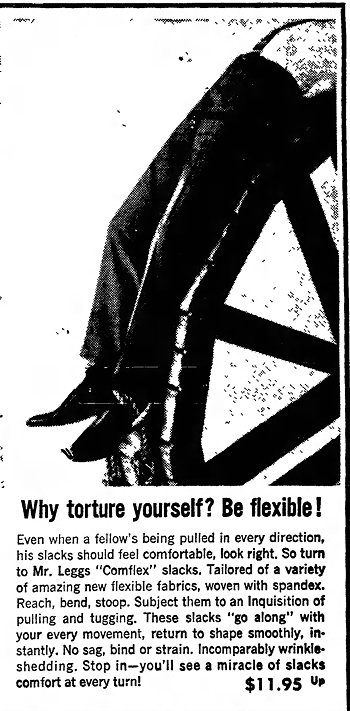
"Why torture yourself? Be flexible!"
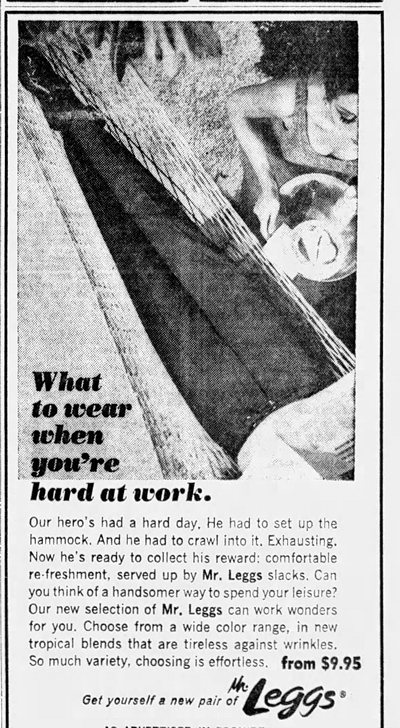
"Our hero's had a hard day. He had to set up the hammock. And he had to crawl into it. Exhausting. Now he's ready to collect his reward."
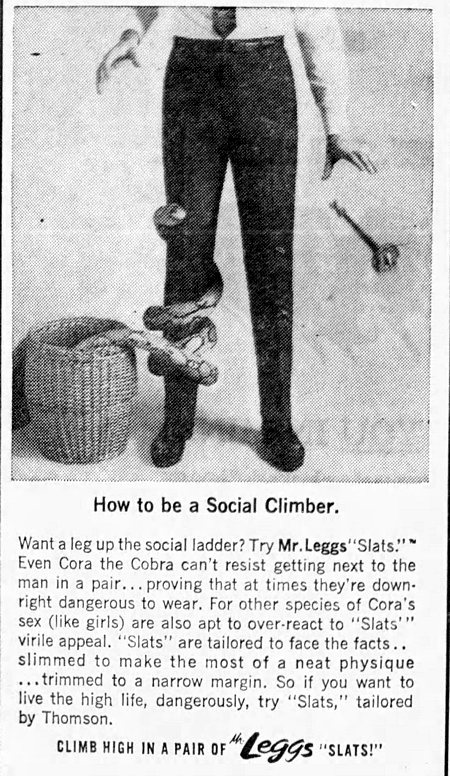
"Even Cora the Cobra can't resist getting next to the man in a pair... proving that at times they're downright dangerous to wear. For other species of Cora's sex (like girls) are also apt to over-react to Slats' virile appeal."
Posted By: Alex - Sat Jul 10, 2021 -
Comments (3)
Category: Advertising, Gender, Men, 1960s
Canned Heat and the Chipmunks: Christmas Song
We are more or less halfway to Xmas, so why not celebrate early?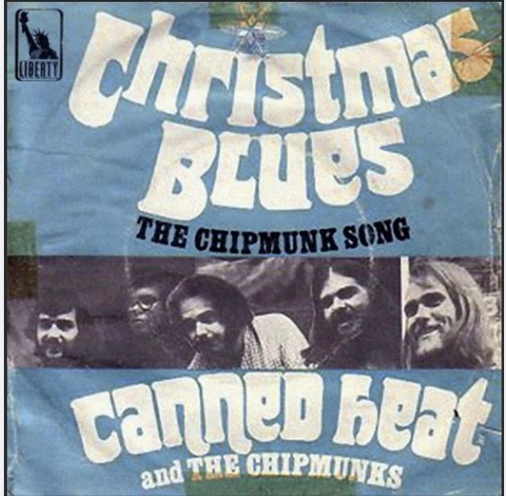
Posted By: Paul - Sat Jul 10, 2021 -
Comments (3)
Category: Anthropomorphism, Music, Unlikely, Improbable and Counterfactual Phenomena, Bohemians, Beatniks, Hippies and Slackers, 1960s, Parody
Mystery Illustration 101
What are these folks doing?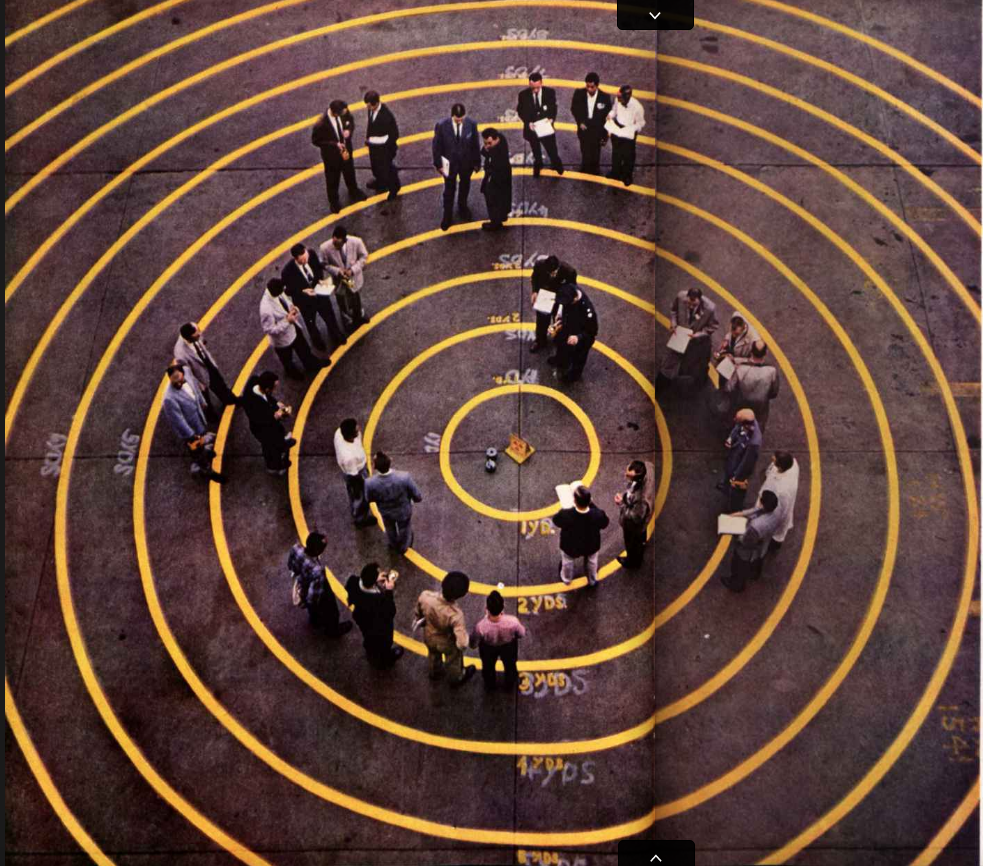
The answer is here.
And after the jump.
More in extended >>
Posted By: Paul - Fri Jul 09, 2021 -
Comments (1)
Category: Crowds, Groups, Mobs and Other Mass Movements, 1960s

| Who We Are |
|---|
| Alex Boese Alex is the creator and curator of the Museum of Hoaxes. He's also the author of various weird, non-fiction, science-themed books such as Elephants on Acid and Psychedelic Apes. Paul Di Filippo Paul has been paid to put weird ideas into fictional form for over thirty years, in his career as a noted science fiction writer. He has recently begun blogging on many curious topics with three fellow writers at The Inferior 4+1. Contact Us |




